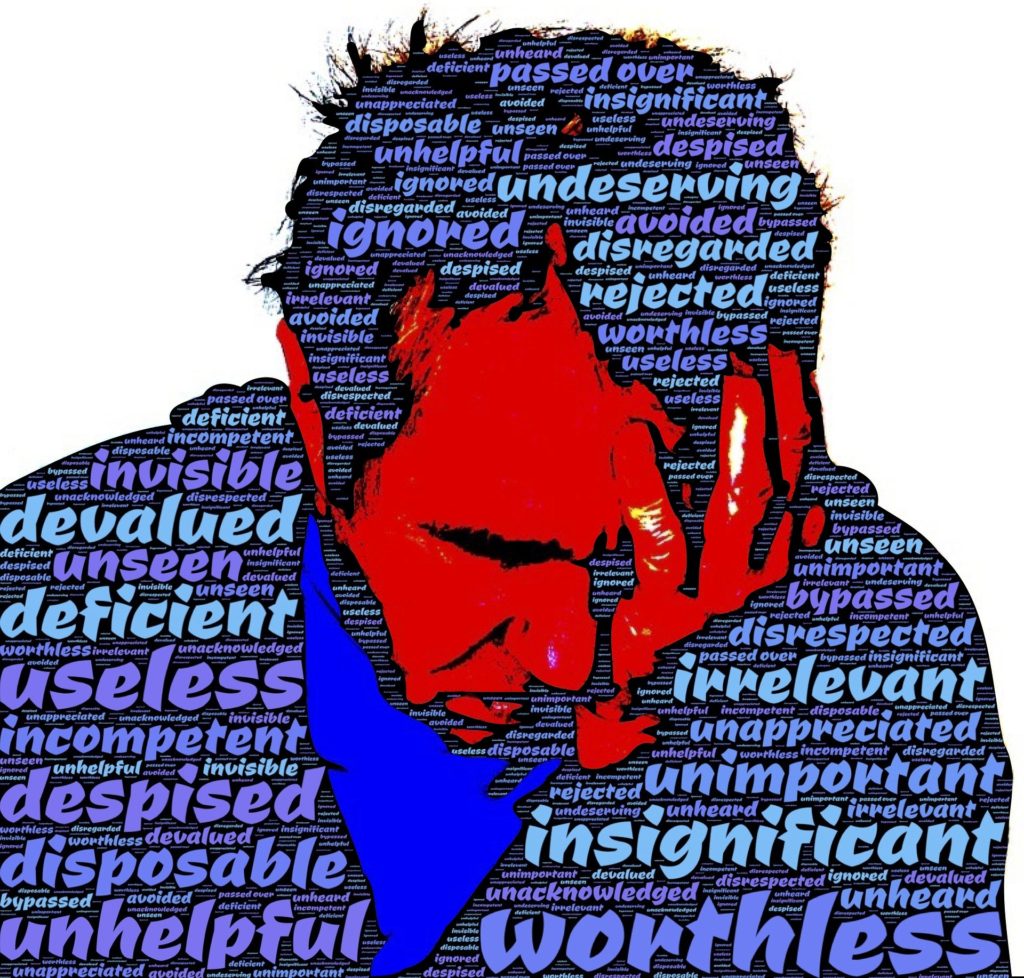A review published in the Israeli Journal of Psychiatry and Related Sciences evaluates the effects of mental health anti-stigma campaigns according to their causal frameworks. The review’s authors, Dr. Eleanor Longdon and Dr. John Read, found that although biomedical explanations of mental illness predominate in current anti-stigma discourse, not only are they ineffective but they also tend to increase stigma. Conversely, evidence indicates that psychosocial explanations of psychosis are effective in reducing stigma and humanizing those who live with the condition.
“In considering the research relationship between biogenetic causal beliefs and negative attitudes…[we] explore the argument that framing individuals as “people with problems” as opposed to “patients with illnesses” is a more promising and robustly evidence-based strategy for reducing stigma and prejudice.”

Longdon and Read begin by emphasizing the fact that those diagnosed with psychosis or schizophrenia are often recipients of bias and social rejection, experiences that can be more distressing for individuals than their initial mental health concern. Negative perceptions on the part of the public, the media, and health care providers serve to exacerbate these damaging social responses.
The authors write that the “toxic triad” of “perceived dangerousness, unpredictability, and lack of recovery potential” are particularly pernicious examples of commonly held perceptions that contribute to social distancing, exclusion, and discrimination against individuals with mental health diagnoses. These perceptions have concrete and at times grave consequences, including employment, education, and housing discrimination and experiences of hopelessness and “internalized stigma.” Another consequence is social marginalization, which has implications for individuals’ prognosis, given the documented importance of social interactions and supports in psychosis recovery.
Contemporary campaigns to address mental health stigma have typically aimed to inform audiences about the biological causes of “mental illness” with the goal of alleviating blame and thus reducing the public’s negative judgments of those with diagnoses. The authors suggest that such frameworks are actually unhelpful (and in some cases are harmful) in improving social attitudes towards those with psychosis. They propose that psychosocial causal models, which are also broadly supported by research, offer more nuanced and humanizing ways of understanding experiences of psychosis and reducing related stigma.
In order to assess the effectiveness of biogenetic and psychosocial explanatory models in reducing stigma, the authors performed a review of the literature on mental health anti-stigma efforts. In their analysis, they present an overview of correlational and experimental research findings, as well as research from other fields, such as health services and social psychology.
Correlational research in this area of inquiry typically involves analyzing links between participants’ beliefs about the cause of mental health issues with assessments of attitudes (e.g. perceived dangerousness) and/or “intentions for social proximity” (e.g. desire to interact with, live near, etc. those with diagnoses). The authors found that existing correlational research shows that biologically-rooted etiological beliefs are linked to poorer results.
One review examining the results of 22 studies completed in 14 countries between 1975 – 2011 concluded that 96% of findings related to biological causal models were linked to negative attitudes, whereas 92% of findings focused on psychosocial models were connected to positive attitudes. Another study that analyzed U.S. population surveys from 1996 and 2006 found that public acceptance of biogenetic frameworks was connected to higher rates of social rejection of those with mental health diagnoses.
The authors’ review of experimental studies provides additional support for the strength of psychosocial models in reducing mental health stigma. One study on attitudinal change found that case vignettes with “biological explanations” elicited less empathetic responses from mental health providers than those that incorporated psychosocial details.
In another study, educational approaches that stressed schizophrenia’s psychosocial causes served to minimize psychology and medical students’ perceptions of patients’ danger and boost their belief in the possibility of recovery. Alarmingly, a behaviorally-focused experimental study found that study participants responded more severely – i.e. giving electric shocks – when they were told that the recipient’s mental health issues were due to an illness, rather than to childhood trauma. Lastly, a meta-analysis of 28 experimental studies found that although biological models did reduce blame as intended, they also resulted in a rise in perceived dangerousness and pessimism about recovery.
The authors discuss some of the reasons why campaigns which subscribe to the biologically-oriented belief that “mental illness is an illness like any other” often fall short in their ability to effectively reduce stigma. The Canadian Health Services Research Foundation has offered some possible explanations, including the idea that although the disease model reduces blame, it also perpetuates the belief that those who experience psychosis lack control of their behavior, which can serve to spread perceptions that they are “unpredictable” and “dangerous.” The Foundation also points to the alienating categorization inherent in biogenetic models, writing that “Biogenetic models foster an ‘us and them’ mentality, which in turn creates the desire for social distance.”
Longdon and Read suggest that continuum models of mental health offer hopeful possibilities for dispelling the “us and them” thinking that often results in social distancing and discrimination. The authors close by highlighting other opportunities to reduce mental health stigma and support the well-being and inclusion of those living with psychosis.
“An important aim for future research and policy is finding ways to reduce the ’us and them’ mentality that perpetuates stigma, including the rejection of essentialist frameworks that reduce complex experiences like psychosis to a series of biological markers – and in doing so encourage exaggerated beliefs about abnormality and difference.”
Efforts to foster positive, humanizing attitudes towards “psychiatric service-users” represent one such opportunity, which they suggest can be achieved in part through increased social contact. Such contact may include empowering those with mental health diagnoses to “share stories of hope and recovery” and of the effects of prejudice on their lives, as well as inviting “service-users” to help develop and provide training courses for students in the fields of psychology and medicine.
“There is evidence that locating mental distress as an understandable response to life adversity is one means of achieving this [stigma reduction], although it is also important to locate such efforts within the wider socio-political goal of challenging systematic forms of intolerance and prejudice towards a minority experience.”
****
Longdon, E., & Read, J. (2017). ‘People with Problems, Not Patients with Illnesses’: Using Psychosocial Frameworks to Reduce the Stigma of Psychosis. The Israel journal of psychiatry and related sciences, 54(1), 24-28.















Since none of the DSM disorders are actually real diseases with genetic etiologies, including “schizophrenia.” I absolutely agree, it’s highly inappropriate for the mental health industries to continue to propagate the biogenetic etiology lie.
https://www.nimh.nih.gov/about/directors/thomas-insel/blog/2013/transforming-diagnosis.shtml
And since the “schizophrenia” treatments, the antipsychotics/neuroleptics, can create both the negative and positive symptoms of “schizophrenia.” The positive symptoms, like psychosis, can be created via antipsychotic induced anticholinergic toxidrome and the negative symptoms can be created via neuroleptic induced deficit syndrome. It is highly likely that the primary etiology of “schizophrenia” is iatrogenic, not genetic, in nature.
https://en.wikipedia.org/wiki/Toxidrome
https://en.wikipedia.org/wiki/Neuroleptic-induced_deficit_syndrome
Exposing this medical truth would likely be the best way to reduce stigma of those, 82% of whom are actually child abuse victims, labeled as “psychotic.”
https://www.madinamerica.com/2016/04/heal-for-life/
Unfortunately for the “mental health professionals,” turning child abuse victims into “psychotic” people with the antipsychotic drugs on a massive scale doesn’t actually help child abuse victims, it further harms them. I hope the mental health industry will some day end their iatrogenic harm of millions of child abuse victims.
And I will point out that this psychiatric silencing of child abuse victims on a massive scale also functions to aid, abet, and empower the pedophiles. And this has resulted in a worldwide pedophilia epidemic as well as massive in scope child trafficking problems, according to many on the internet, as well as world leaders.
Report comment
I really want to do a study on how many people labeled “bipolar” got that way from a bad reaction to an SSRI. My guess is the pharma-psychiatry guild wants to keep quiet about this. I doubt they have done any research on this since they know at the bottoms of their filthy little hearts it would make their industry look bad.
Report comment
I am sure the number is quite high. I’ve even heard rationalizations from the psychiatric community – people have a manic reaction to SSRIs because they have “uncovered an underlying bipolar disorder.” Not because their drugs are doing it, but they totally know it happens – they just blame the victim, as usual.
Report comment
Rachel,
I think everybody knows someone that wasn’t too bad to begin with and then got onto the slippery slope of “false mental illness”. “Bipolar” might be one way to describe the result, but it could equally pass for “schizophrenia” as the person develops lots of symptoms they never had before.
A friend of mine ended up like this recently. She got involved with the Borderline Personality “People” who were really nice to begin with, and got her on drugs. This triggered an eating problem and now she is morbidly obese with lots of connected health problems.
This friend of mine did have genuine issues and her struggle was painful, but she had been successfully dealing with life. She thought that the nice medical people might have something more to offer – but they nearly destroyed her.
Report comment
Rachel, it was the common withdrawal symptoms of a SNRI “safe smoking cessation med” that resulted in my “bipolar” misdiagnosis. And I was blatantly misdiagnosed at the time, according to the DSM-IV-TR. Since it stated,
“Note: Manic-like episodes that are clearly caused by somatic antidepressant treatment (e.g., medication, electroconvulsive therapy, light therapy) should not count toward a diagnosis of Bipolar I Disorder.” (p 332)
What’s really sad is claiming the common adverse effects of the antidepressants are “bipolar,” is no longer a misdiagnosis, according to the DSM5. Given that note now states,
“Note: A full manic episode that emerges during antidepressant treatment (e.g., medication, electroconvulsive therapy) but persists at a fully syndromal level beyond the physiological effect of that treatment is sufficient evidence for a manic episode and therefore, a bipolar I diagnosis.” (p. 124)
You’re right, the psychiatric industry is actually intentionally making their DSM less valid, to intentionally cover up and prevent research into their staggering in scope, completely iatrogenic, crimes against millions mislabeled as “bipolar.”
Especially the millions of children who had the adverse effects of the antidepressants and ADHD drugs misdiagnosed as “bipolar,” that resulted in the completely iatrogenic “childhood bipolar epidemic,” as reported in Whitaker’s “Anatomy of an Epidemic.”
Report comment
Hi Someone Else,
I agree with you. “Schizophrenia” in todays terms is a homogeneous chemically induced disorder – anyone on strong psychiatric drugs 24 hours per day, will go Mad if they attempt to stop taking them. And this is the understanding of “Schizophrenia”.
But if a person gets suitable human based help when they run into crisis – then the “Schizophrenia” becomes transitory. But since theres no such thing as transitory “Schizophrenia” then it no longer exists.
Report comment
Fiachra,
What I medically pointed out is that the “schizophrenia” treatments, “the antipsychotics/ neuroleptics,” all by themselves, do in fact create both the negative and positive symptoms of “schizophrenia.”
Pointing out this medical fact does prove that “schizophrenia” is highly likely a primarily iatrogenic, as opposed to genetic illness, as the psychiatrists have fraudulently been claiming for decades.
I did not personally ever find psychological help that was beneficial to me personally. Glad you did. But my failure in finding such means I do believe the psychological industries should divorce themselves from the scientifically “invalid” DSM fraud of the psychiatric industry. So the psychological industry may once again assist humans with some sort of hopeful and scientifically valid talk therapy.
Although I personally am now at the point with the counseling industries that I say, “F-ck me once, shame on you. F-ck me twice, I’m never again going to trust in “counselors.”
But people should be able to trust in talk therapists. It’s a shame the counseling industry bought hook, line, and sinker into the psychopharmacological fraud of the psychiatric industry.
Report comment
“They hurt you at home and they hit you at school
They hate you if you’re clever and they despise a fool
Till you’re so fucking crazy you can’t follow their rules
A working class hero is something to be”― John Lennon
As bad behaviours used to be choices and by that reasoning sins. If the public did not like a specific sinner they stoned them( threw rocks) at the person . Then about 2000 years ago Jesus taught forgiveness.
Today , as bad behaviours may be resulting from the psychiatric drugs affecting the mind (paradox of drugging the present moment to prevent a possible bad future), the confidence trick is perfect. You learn from your mistakes, you do not take a magical pill to correct them. It is inherit in mankind to make mistakes.
Report comment
Communities treat convicted ex-felons better than psychiatric patients. Why?
Because biological science has allegedly proven the “mentally ill” can never change.
Thanks pharma-psychiatry. You have really helped reduce the “stigma.” Like that was ever a goal to begin with.
Report comment
“Psychosis”, would depend on the “reliability” of the doctors providing the information:-
Galway, Ireland, November 1980:-
“..The patient was co-operative well orientated with intact memory. He had mildly agitated psychomotor behaviour. There was no evidence of any florid psychotic features…”
Admitting Doctor 1980 Dr Fadel
Galway, Ireland, November 1980:-
” ..Presented with aggressive behaviour, paranoid delusions, ideas of reference and auditory hallucinations…”
Dr Donlon Kenny 1986 – to the UK
DR WRAY NEWTON MEDICAL, CENTRAL LONDON OCTOBER 2012
“…Eye contact normal currently functioning, no sign of self neglect
mildly agitated but no sign of thought disorder…”
MY COMMENTARY
I have never had an eye contact problem, I have never neglected myself, and I have functioned completely normally in the 30 years I have been in the UK.
I was not mildly agitated, I was unhappy with the misuse of my personal information. I have not suffered from thought disorder in my 30 years in the UK.
(I have the background documentary evidence to support what I’ve written above).
Report comment
An important subject to clarify. Thanks for the article.
Report comment
“Psychosis” is a stigmatizing term.
Report comment
Thank you oldhead. How is this not obvious to everyone? It’s the psychiatric jargon and psycho-babble that creates the very stigmas that psychiatry allegedly tries to resolve. It’s as if the dragon of psychiatry spouts fiery flames of stigma with words like “psychosis” and “mental illness,” and then it retreats to its filthy lair to revel in the increased revenue that so-called “anti-stigma” campaigns will bring. Enough is enough. Slay the Dragon of Psychiatry.
Report comment
“Stigma” is nothing more than bigotry against those labeled by psychiatry. It’s not something for us to “overcome,” but for others to stop doing.
Report comment
The term “stigma” comes from the practice of punishing law breakers and runaway slaves by cutting or branding their bodies to show the community “This is an object of disgrace. Treat it accordingly.”
Back in ancient times, the people who carried out these sentences never pretended to be confused or upset when their victims became outcasts. Nor did they have the chutzpah/stupidity to whine that they were the only ones who really suffered when they branded or cut marks in other people.
Either shrinks are dumber than coleslaw or pathological liars. Either way, why does anyone believe their whiny nonsense? It’s not like they suffer anything but wealth and prestige.
Report comment
Psychiatric “diagnoses” are character defamation. They take annoying, odd, or bad behaviors and tell the community that this is the entire identity of the diagnosed–that they are hopelessly and irredeemably evil.
Just for good measure they add behaviors the person has never been guilty of. If you are “schizophrenic” you must be dangerously violent. “Bipolars” are all promiscuous. Whether you have ever been violent or promiscuous is irrelevant. You will surely become that way if you aren’t already.
Report comment
An important aspect not mentioned in this very important article and the review examined:
“I don’t use language like “stigma.” I talk about prejudice, discrimination, and oppression, because that’s really what it is in the end.” —Sera Davidow,
founder of the W.Mass. Recovery Learning Community
Interview by The Sun. http://thesun.uberflip.com/t/49818-digital-edition
The quote points to the fact that the causes of stigma are the same as the causes of the distress or mental problems in the first place. This shows the need for intersectionality in any and all “solutions.”
Report comment
I like Sera’s quote, because she points out “stigma” is just like racism and other forms of singling others out to treat badly.
When NAMI talks about “stigma” they make it sound likes it’s maybe not okay, but still a natural and legitimate response to the “mentally ill.” It’s only bad because it causes “pill shaming” and cuts into their profits.
Report comment